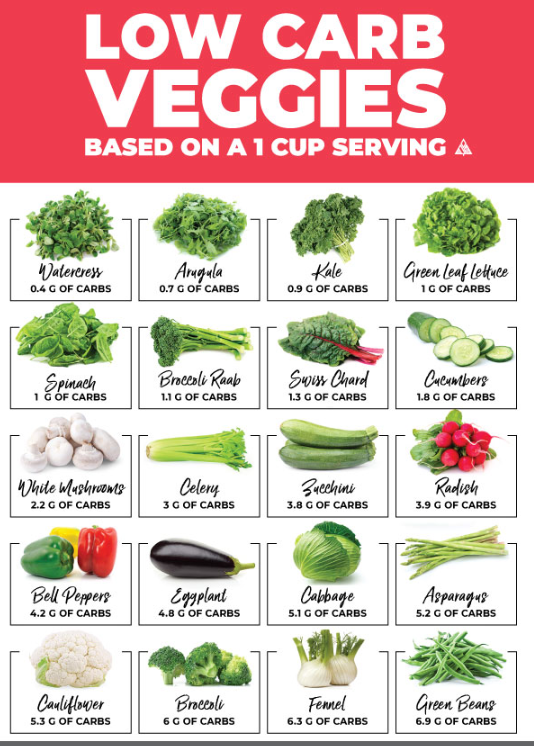BOURSESSENEGAL – In the world of nutrition, low carb vegetables stand out as essential components of a healthy diet. Whether you’re following a ketogenic plan or simply looking to reduce your carbohydrate intake, incorporating these veggies can provide essential nutrients without the extra carbs. In this article, we will explore the best low carb vegetables, their health benefits, and creative ways to include them in your meals.
Why Choose Low Carb Vegetables?
The Benefits of Low Carb Vegetables
Low carb vegetables offer a wealth of health benefits. They are rich in vitamins, minerals, and fiber, making them great for your overall health. Unlike starchy vegetables, these options have a minimal impact on blood sugar levels, making them ideal for weight management and blood sugar control.
Supporting Weight Loss
If you’re trying to lose weight, low carb vegetables can be your best allies. They fill you up without adding many calories, helping you maintain a calorie deficit. Additionally, the fiber content in these vegetables promotes satiety, reducing the urge to snack between meals.
Top Low Carb Vegetables to Include in Your Diet
1. Leafy Greens
Examples: Spinach, kale, Swiss chard, and arugula.
Leafy greens are nutrient-dense and extremely low in carbohydrates. They are packed with vitamins A, C, and K, as well as iron and calcium. Adding a variety of leafy greens to your meals boosts nutrition while keeping carbs low.
2. Broccoli
Broccoli is a powerhouse of nutrition and one of the best low carb vegetables available. It contains only about 6 grams of carbs per cup when cooked. Rich in vitamin C, fiber, and antioxidants, broccoli supports immune health and digestion. You can enjoy it steamed, roasted, or even in stir-fries.
3. Cauliflower
Cauliflower has gained popularity as a versatile low carb substitute for grains and legumes. With just 5 grams of carbs per cup, it can be riced, mashed, or used as a pizza crust. This vegetable is an excellent source of vitamins C and K, and it supports detoxification processes in the body.
4. Zucchini
Zucchini is another fantastic low carb vegetable, with only 4 grams of carbs per cup. It’s incredibly versatile, perfect for zoodles (zucchini noodles), stir-fries, or simply grilled. Zucchini adds moisture to dishes while being low in calories, making it a great addition to your meals.
5. Bell Peppers
Bell peppers are not only colorful but also packed with nutrients. A cup of sliced bell peppers has about 6 grams of carbs. They are high in vitamin C and antioxidants, which help fight inflammation. Enjoy them raw in salads or cooked in stir-fries and fajitas.
6. Asparagus
Asparagus is a low carb delight with about 5 grams of carbs per cup. It’s rich in folate, vitamins A, C, and K, and has a high water content. This vegetable makes an excellent side dish when roasted or grilled, bringing out its natural sweetness.
7. Mushrooms
Mushrooms are low in carbs and calories, making them ideal for various diets. They contain about 2 grams of carbs per cup. Rich in B vitamins and minerals, mushrooms add umami flavor to dishes. Try them sautéed, in soups, or on pizza.
Incorporating Low Carb Vegetables into Your Meals
Creative Cooking Techniques
When it comes to preparing low carb vegetables, variety is key. Here are some creative cooking techniques:
- Sautéing: Quickly cook vegetables in olive oil or butter for enhanced flavor.
- Roasting: Roasting brings out the natural sweetness in veggies. Toss them in olive oil, season, and bake at 400°F (200°C) until tender.
- Steaming: Steaming helps retain nutrients while keeping the vegetables crisp.
- Blending: Blend veggies into smoothies or soups for a nutritious boost.
Meal Ideas Featuring Low Carb Vegetables
- Salads: Combine leafy greens with sliced bell peppers, cucumbers, and a lemon vinaigrette for a refreshing salad.
- Stir-Fries: Use broccoli, bell peppers, and zucchini in a stir-fry with your choice of protein.
- Soups: Make a low carb vegetable soup using cauliflower, mushrooms, and spinach for a hearty dish.
- Casseroles: Create a cheesy cauliflower and broccoli casserole for a comforting meal.
- Zoodles: Swap pasta for zucchini noodles topped with marinara sauce and grilled chicken.
Tips for Choosing and Storing Low Carb Vegetables
Selecting Fresh Vegetables
When shopping for low carb vegetables, choose fresh, vibrant options. Look for:
- Firm textures without bruising.
- Bright colors, indicating high nutrient content.
- Seasonal vegetables for the best flavor and price.
Proper Storage
Store low carb vegetables properly to maximize freshness:
- Leafy Greens: Keep them in a damp paper towel in a breathable container in the fridge.
- Broccoli and Cauliflower: Store in a perforated plastic bag in the fridge to retain moisture.
- Zucchini: Keep it in a cool, dry place, ideally in the vegetable drawer of your fridge.
Understanding Portion Sizes
Carb Count in Serving Sizes
Being mindful of portion sizes is essential, even with low carb vegetables. For instance, while broccoli is low in carbs, consuming it in large quantities can add up. Aim for balanced portions, such as one cup of cooked veggies per meal, to stay within your carbohydrate goals.
Balancing Your Plate
Ensure that your meals are balanced by incorporating low carb vegetables alongside protein and healthy fats. This combination will keep you satisfied and nourished.
Conclusion: Embrace Low Carb Vegetables for a Healthier Lifestyle
Incorporating low carb vegetables into your diet can significantly impact your health and well-being. They provide essential nutrients while keeping carbohydrate intake in check, making them perfect for weight loss and overall health.
With so many delicious options available, experimenting with different cooking methods and recipes can keep your meals exciting and nutritious. Start today by adding a variety of low carb vegetables to your plate, and enjoy the benefits of a healthier lifestyle!
This comprehensive guide aims to provide valuable insights while engaging the reader. If you have any specific requests or need further adjustments, just let me know!
REFERENCE : https://www.health.com/



